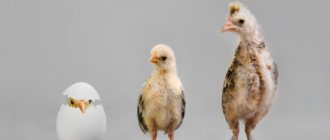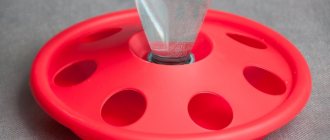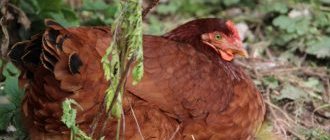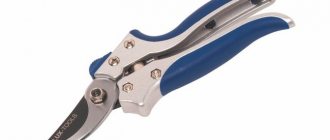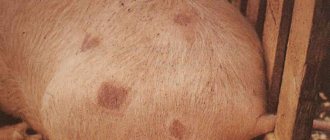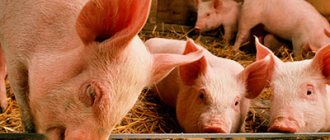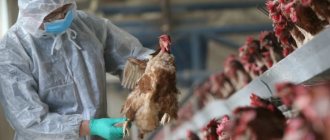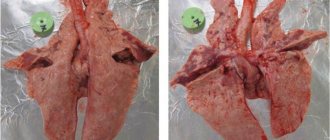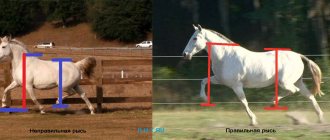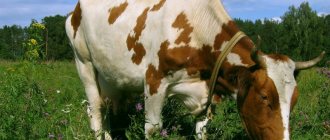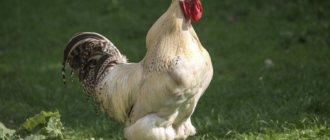Stages of embryo development
There are two ways to hatch chickens: in an incubator and naturally (the chicken incubates). The total ripening period in both cases is from 20 to 25 days. If the 26th day passes, hatching will not take place: the embryo has died in the egg. Moreover, in conditions of sufficient heating, the birth period will be no more than 20-21 days, and if the temperature at times was not high enough, delays of several days are likely. Thus, the maturation rate for a chicken is 3 weeks.
Egg incubation
In 21 days, the embryo manages to fully form and turn into a full-fledged chick.
The entire process of formation of an embryo from the yolk and white of an egg is divided into 3 stages:
- up to 5 days;
- from 6 to 20 days;
- day of hatching.
First 5 days
During this period, not only does an embryo form from a simple, familiar egg, consisting of white and yolk, but it also begins to breathe atmospheric air accumulating in the cavity of the egg. Experiments on growing a chicken from an egg with the shell removed in a Petri dish made it possible to see the whole process live:
| Description | Photo |
| On the first day, cell division processes begin in the center of the egg: they are the ones that will soon give rise to the embryo. The photo shows the so-called germinal disc - it is from this that the embryo is formed. | |
| Already on the second day, a web of blood vessels and the amnion appears - this is a transparent sac, a “shirt” around the embryo. It prevents the death of the embryo from possible sharp blows and jolts. | |
| On the third day, the formation of the head is visible; the folds of the amnion join together - it turns into a single membrane. | |
| On the 4th day, the eyes and future legs of the chicken are already visible; it reaches a length of 8-9 mm. | |
| On the 5th day, the embryo sharply increases in length (2 times) and begins to breathe atmospheric air (before this, it was fed oxygen exclusively from blood vessels). |
Period from 6 to 20 days
At this stage, all the main processes occur, due to which the embryo grows rapidly and eventually reaches almost the size of an egg.
| Description | Photo |
| On the 8th day, the formation of gonads is visible - it is easy to distinguish a rooster from a hen using them | |
| By day 10, the beak, legs and wings are clearly visible | |
| On the 12th day, the first down is visible running along the back; embryo length – 35 mm | |
| On the 14th day, the embryo grows to 47 mm, the entire body is already covered with down. | |
| By day 16, all the protein is spent, and the embryo switches to feeding on yolk | |
| By the 18th day, the chicken acquires its usual shape, almost all the water in the egg cavity is consumed |
Video - The process of embryonic development
Prices for ovoscope
Ovoscope
How does a chick appear?
Video: Why do chickens fall on their feet?
Many people would like to know how chickens are born, because even in a dream they cannot imagine the whole process that happens inside a chicken egg. The development of a chick in an egg begins with a blastodisc, which is what is commonly called a small clot of cytoplasm. This is where new life begins to emerge. This clot is located on the surface of the egg yolk. Since the yolk in this place is less dense, the blastodisc is always in the upper position with any rotation of the egg.
Chickens
Thanks to this, at the time of incubation the embryo warms up better. The entire process of chick evolution begins long before the hen lays an egg. On the yolk, the cytoplasm can be seen as a small bright spot, the diameter of which is no more than two millimeters. The light halo around the spot is called blastoderm.
As soon as favorable conditions arise for the egg (it is warmed up by a hen, or an incubator is used), cell division begins. Already on the second day, two shells appear in the egg:
- Amnion;
- Allantois.
These shells are temporary organs, thanks to which the chick grows and develops until it is fully formed.
Amnion in a chicken
The chick needs this shell so that the embryo does not dry out and is protected from external influences. During the formation of the chick in the egg, the amnion provides it with the necessary amount of liquid.
Allantois in a chicken
Thanks to this shell, a large number of other functions are performed, namely:
- The chick embryo receives the right amount of oxygen;
- Waste products are promptly removed from the embryo;
- The chick's body receives all the necessary microelements;
- Provides calcium to the embryo.
The allantois is a vascular network that surrounds the entire inner surface of the egg and connects to the embryo at the navel.
Egg system
The “breathing” of the embryo depends on the stage of development of the embryo. In the first stages of development, oxygen enters the blastodisc cells independently. After blood vessels appear, oxygen comes along with the blood from the yolk. But as the embryo grows and develops, the oxygen supplied from the yolk is not enough for it.
Therefore, after a week, oxygen begins to flow through the allantois, which, as the embryo grows, spreads throughout the shell.
Nutrition of the embryo
At first, the embryo feeds on the white and yolk of the egg. The embryo is located from the sharp end to the blunt end, with the protein concentrated at the sharp end. But, thanks to the pressure of the allantois, it moves and, with the help of the amnion, enters the embryo’s mouth. After two weeks, all nutrients reach the chicken thanks to the allantois from the shell.
Egg position
For normal development of the embryo, it is necessary that the egg be able to rotate one hundred and eighty degrees. This is only possible if the egg is positioned horizontally in the incubator. If incubation occurs in a vertical position, then the development of the embryo slows down, its weight at hatching is significantly less than during a horizontal position.
Horizontal egg laying
Why do you need to turn the egg?
Rotate the eggs throughout the incubation period. The exceptions are the first day and the last two. On the first day, it is important to warm up the blastodisc well; on the last day, the chick has already assumed the position in which it is preparing to hatch.
Thanks to rotation, the blastoderm will not be able to stick to the shell. In addition, the following actions are performed:
- The amnion contracts;
- The egg is heated evenly on all sides;
- The embryo takes the correct position;
- Gas exchange improves;
- The allantois closes;
- Nutrition improves.
Signs of imminent hatching
It is easier to control hatching in an incubator than when brooding by a chicken. In any case, after 19 full days they begin to prepare for the fact that the chick will soon be born. It becomes possible to recognize its imminent appearance by the following signs:
- a faint squeaking sound coming even from a whole egg;
- the sound of scraping on the shell - you can hear it well if you put your ear close to the egg;
- the appearance of a small hole (peck) and cracks radiating from it is an obvious signal that the hatching process has begun; in this case, the squeak of a chicken is always heard.
Eggs in a homemade incubator
Determination of egg fertilization
A chicken egg is candled for the first time 4-5 days after laying. When the egg is fertilized, a germinal disc measuring 3-4 mm will appear on the yolk. This is the embryo itself, the developing chick. Under normal conditions, a transparent whitish spot is observed in the center. Also the yolk at this stage will have a small amount of blood and blood vessels. If there are no signs, then the egg is not fertilized and is edible. If, upon examination, not veins are detected, but a belt of blood around the yolk, such an egg must be disposed of - this indicates that the embryo died at a certain stage of development.
Expert opinion
Sadchikov Nikolay Alekseevich
Veterinarian ornithologist
Ask a Question
The easiest way to view eggs is with a white shell - they are easily translucent. It can be difficult to candling brown eggs, as well as seeing their contents when candling.
Rejection of eggs during ovoscopy is carried out according to the following criteria:
- dark spots and foreign inclusions in the white or yolk;
- blood clots or belt;
- lack of movement of the yolk when shaking the egg;
- two yolks;
- the yolk is not visible visually;
- absence of blood vessels and dark spot on the yolk;
- air chamber enlargement;
- marbling of shell color.
Features of the structure and chemical composition of a chicken egg: what do the white, yolk and shell consist of?
Read
Why are there eggs of different colors? How to determine what color eggs a chicken will lay and what color the yolk will be?
More details
How a chicken lays eggs: the process of egg formation from the formation of yolk and white to laying. Process duration
Look
Hatching process
Normally, the hatching process itself, from the formation of pipping to the complete release of the chicken from the shell, occurs within 1 hour. There are times when it may take several hours. The process goes like this:
- A small hole appears, revealing the chicken's light pink beak.
- It first destroys a small fragment of the shell, and then begins to expand the hole, which is why cracks extend from it in different directions.
- At this time, the egg is actively spinning due to the efforts of the chick, a grinding sound is heard - it is trying to destroy the walls with its beak and scratching with its toenails. At the same time, a squeak is heard.
- Next, the cracks begin to noticeably increase, and after a few minutes the 2 parts of the shell noticeably diverge from each other.
- With rather sharp movements, the newborn finally pushes both halves apart and seems to roll out of the egg. His eyes are immediately open, he is breathing actively. Initially, the surface of the chick's body is wet, and the remains of the shell are noticeable on the feathers.
Hatching process
Video - Birth of a chick in an incubator
Signs of impending hatching
Your babies can be born either traditionally - from a hen, or through an incubator. In any case, it is necessary to control the incubation process, but in an incubator this is naturally done more carefully. To be sure that your eggs will definitely produce a brood, they must be 100% fertilized and of high quality. Let's assume that you laid good eggs, the conditions in the incubator were correct, and how can you understand that the chick will soon be born? The incubation period of a chicken egg is 21 days.
Three days before the chicks' expected birthday, you need to stop turning the eggs in the incubator and monitor them closely. In the egg, which will soon become a chicken, you can hear the characteristic tapping of its beak - this is a small bird asking to be released. Sometimes you can even hear very quiet squeaks; such signs of life begin to appear already on days 17-19. After tapping comes a turn of pecks - if you see a small hole in the shell, do not rush to “help” the bird get out. The first video showing us the process of hatching a chick, see below.
Sometimes several hours pass from the moment of pecking until the bird is completely hatched. The main thing is to periodically pay attention to such a pecked egg; sometimes the bird still needs help, otherwise the chicken may suffocate and die in its shell.
Do I need to help the chick hatch?
Often, novice farmers wonder whether there is a need to help the chicken hatch - after all, all processes occur at the level of instincts that nature has laid in it. The correct answer, based on numerous experiences with hatching chickens in incubators, is the following: help is needed, but not in all cases.
Hatching process in an incubator
Prices for egg incubators
Egg incubators
The reasons for help are as follows:
- In incubator conditions, there may be insufficient humidity, due to which the shell becomes strong, and the chicken practically cannot get out on its own. If he cannot leave the egg for several hours, he may suffocate.
- Finally, in some cases the chick may be quite weak, and if not helped, it will take too long to hatch, so again there is a risk of death.
The most important thing is to understand in what cases and how to help. The obvious cases are when hatching takes several hours: normally this should not happen. It is especially important that within 15-20 minutes the chick can pick out the peck until it becomes a gap: a sufficient amount of air must reach it.
Beginning of pecking
Possible help includes the following:
- when the bite has just appeared, you can slightly increase it by chopping off literally a centimeter in each direction;
- at the stage when a crack has appeared and the halves have already separated, you can slightly help the chicken to free itself from the now unnecessary shell. This moment was captured on video.
Video - The process of hatching chickens
When helping a newborn, 2 important conditions should be taken into account:
- Under no circumstances should you pick the shell yourself when the bite has just appeared. The fact is that the chicken's blood vessels can be connected to it until the very last moment. If you rush, the vessels will be damaged, and there is a high probability that the newborn will die from blood loss.
- They release the chick from the halves of the shell when he has already moved them apart, very carefully. Before doing this, first make sure that the shell actually moves freely from the surface of his body (this was clearly shown in the video).
You can help the newborn by slightly increasing the size of the peck he makes.
After the birth has taken place and the chicken has completely freed itself from the egg, the shell is thrown away, and the newborn should be allowed to dry for about 2 hours - during this time you should not touch it, try to remove the remains of the shell and perform other actions.
Development of a chicken in an egg by day
In the chicken’s body, eggs are formed, the number of which can reach 3000. The mature egg in the form of a yolk is sent to the oviduct, and the protein is already formed there. In the case of mating with a rooster, the egg is fertilized. But even if mating does not occur, the egg, after entering the uterus, is still overgrown with a shell, after which it comes out.
The germinal disc from which the chick subsequently develops
Once placed in the incubator, the egg begins to develop very rapidly. Changes occur daily, all of them are presented in the table below.
Table 1. Development of a chicken in an egg by day
| Serial number of the day | What happens in an egg |
| 1 | On the first day after the fertilized egg is laid, a disk with an embryo is visible on the yolk. It gradually begins to enlarge and become overgrown with blood vessels. In the warm environment of the incubator, embryonic cells rapidly divide; it reaches a size of 0.5 cm. |
| 2 | The amnion, a sac of fluid that will protect the embryo, begins to form. Then the allantois is formed - a substitute for the lungs. Later it will supply the fetus with oxygen and eliminate kidney secretions. Also on the second day, the heart of the future chicken is formed and begins to beat. |
| 3 | The amnion, a sac of fluid that will protect the embryo, begins to form. Then the allantois is formed - a substitute for the lungs. Later it will supply the fetus with oxygen and eliminate kidney secretions. Also on the second day, the heart of the future chicken is formed and begins to beat. |
| 4 | The allantois becomes covered with vessels, fills with fluid and completely envelops the embryo. The latter moves away from the yolk and unfolds. The first rudiments of wings, paws, and dark spots of future eyes appear. The embryo reaches 0.8 cm in length. |
| 5 | Eyes form and enlarge, paws and wings thicken. The curved neck and mouth are noticeable. The embryo begins to breathe through the allantois. The future chick grows up to 1.6 cm. |
| 6 | The eye is finally taking shape and the eyelids begin to appear. A beak tubercle is formed. The legs are extended, and the fingers stand out on them and on the wings. The allantois grows to the inside of the shell. The length of the embryo is 2 cm, weight is about 2 grams. |
| 7 | There is active growth of the body. The head has noticeably enlarged, the neck lengthens, and the genital organs of the chicks begin to form. |
| 8 | Fingers have appeared, the gonads are fully formed. On the 8th day of the future, the cockerel can be distinguished from the hen. The back is covered with feather papillae, and the jaw is formed. |
| 9-10 | More and more feather papillae appear, and the beak takes shape. The embryo becomes bird-like in appearance. |
| 11 | The body is completely prepared for the appearance of feathers. You can notice the appearance of a comb on the cockerel. Fingers are covered with claws, eyes are half covered with eyelids. The allantois reaches the sharp end of the egg. The embryo grows to 2.5 cm and 3.5 grams. |
| 12 | The back is covered with fluff, and the teeth on the comb are pecked. Body length – 3.5 cm. |
| 13 | The head, legs and back are completely covered with fluff, the eyes are completely closed with eyelids. Scales begin to appear on the paws. The future chick grows up to 4 cm. |
| 14 | The embryo turns its head towards the blunt end of the egg. The length of the developing organism is 4.6 cm. |
| 15-16 | The future chick grows up to 6 cm. The nostrils are noticeable, the claws are finally formed. The protein is already completely used, the embryo uses the yolk as its main food. |
| 17-18 | The paws are completely covered with scales, and the amnion runs out of fluid. The chicken turns its beak towards the air chamber, its head is placed under the right wing, its eyes are closed with eyelids. Allantois begins to shrink. The weight of the chick is 22 grams, length is 7 cm. |
| 19 | The embryo completely absorbs the yolk. Its remains remain in the body cavity. The eyelids rise and open the eyes, the head and neck move towards the air chamber. The remains of the allanthos die off. The chick reaches a height of 7.5 cm. |
| 20-21 | The yolk goes into the abdominal cavity. The chick breaks through the film of the air chamber and breathes with its lungs for the first time. The shell begins to peck. The chicken has a weight of 34 grams and a height of more than 8 cm. It is very difficult for a baby to break through the dense shell, so some of the chicks at that stage die from weakness. |
Chick hatching
